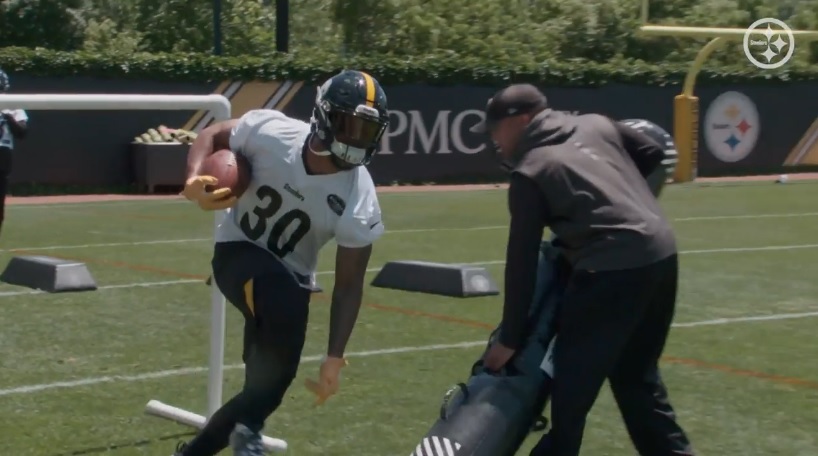The Pittsburgh Steelers went through a bit of a coaching shakeup during the offseason. Mike Munchak and Joey Porter grabbed the headlines. One left to be closer to family, one shown the door by the team. But don’t forget about the change made within the running back group. James Saxon was replaced in favor of Eddie Faulkner. Though it’s hard to believe players wanted to see Coach Sax gone, everything indicated he was liked and respected, the group is quickly building a strong relationship with Faulkner.
James Conner spoke to that in meeting with the media Wednesday afternoon.
“Coach Faulk, we’re learning from each other,” Conner said courtesy of Steelers.com. “We’re talking through protections and telling him how we heard it last year. It’s been awesome because he’s been all eyes and ears. We’re helping him, he’s helping us. We’re really clicking and really working well with each other.”
The Steelers are Faulkner’s first NFL job, though this isn’t his first time in Pittsburgh. As a UDFA running back out of Wisconsin in 2001, he was invited to Latrobe as part of the camp roster. Faulkner quickly got into coaching after spending time at Ball State, Northern Illinois, Wisconsin, and NC State before Tomlin hired him.
Earlier in the week, he spoke to the media and was asked about the new drills he’s brought to this group of backs.
“Everything that I do translates to the game. I’m not out there exercising. But there’s things I’ve picked up from other coaches, people on the Internet. If I like it and I think it can help us, I’m going to use it.”
In just those couple sentences, he’s shown the traits of a good coach. Most importantly, how he uses his drills. “Translates to the game” means drills that you can see each Sunday. Replicating footwork, ball security, training eyes and vision, aspects you’re going to see on gameday. So as a coach, when you go into the film room and review tape, players can see a direct correlation with their drills and how they help on a particular play. When players are able to see the benefit of drills inside a stadium, they buy into what the coach is teaching.
Second, he doesn’t seem to possess an ego. Picking up drills from other coaches or even, as he admits, finding them online, shows an open-mind. Some coaches think their way is best, their way is right, and won’t change their ways. The good ones are always looking to improve and adapt to an always evolving game.
Faulkner praised the mentality of the room too.
“They’re totally receptive. The group has been awesome. They’re eager to learn. They’ve been welcoming me with open arms in terms of the new ideas I’ve brought. They’ve bought in full-speed. I couldn’t ask for anything more in that regard.”








